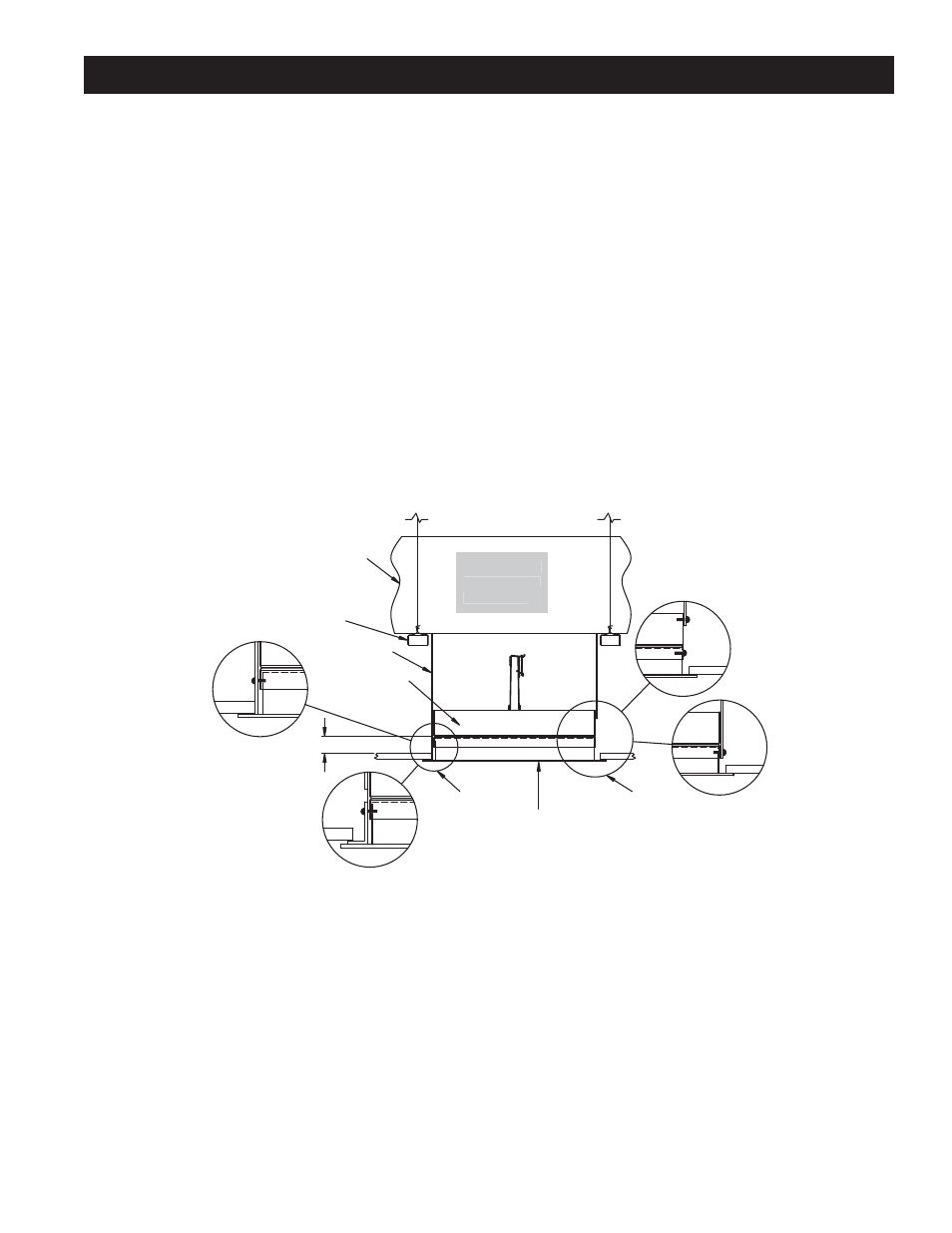Dampers supported from ductwork above (cont.), Surface mounted air inlet or outlet devices, Recess mounted air inlet or outlet devices – Greenheck Ceiling Radiation Dampers (826252) User Manual
Page 6

Surface Mounted Air Inlet Or Outlet Devices
Steel Duct
16 ga. x 1½ in. Steel
Channels (with 9/16 in.
minimum flanges)
Steel Duct
Ceiling Radiation
Damper
3 ¾ in. Max.
Ferrous
Device
DETAIL
B
DETAIL
A
DETAIL
C
DETAIL
D
Air
(Inlet Or Outlet)
Device
Non-Ferrous
Device
All hanger wires
must be vertical
(not splayed)!
All hanger wires
must be vertical
(not splayed)!
Recess Mounted Air Inlet Or Outlet Devices
Dampers Supported From Ductwork Above (cont.)
Figure 5
t.BYJNVNTJ[FPGQFSNJUUFEPQFOJOHFRVBMTNBYJNVN
size of available listed ceiling radiation dampers.
t0QFOJOHJODFJMJOHNFNCSBOF 4FF1BHF 1BSBHSBQI
3) may be up to one inch larger than the nominal
size of the ceiling radiation damper (i.e. a 12 in. x 12
in. (nominal) ceiling radiation damper could have a
maximum ceiling membrane opening of 13 in. x 13
in.).
t$POOFDUJPOPGDFJMJOHSBEJBUJPOEBNQFS BJSEFWJDF
neck, and steel duct drop (see page 1, paragraph 4)
may be satisfied in two ways:
1.
Ceiling radiation damper and air device neck
may be connected directly to the duct drop
(see Detail A, Figure 5).
2.
Ceiling radiation damper may be connected
directly to the air device neck and then the
duct drop connected to the damper (see Detail
B, Figure 5).
t0QFOJOHJODFJMJOHNFNCSBOF TFFQBHF QBSBHSBQI
3) is more than one inch larger than nominal size of
ceiling damper (i.e. if the radiation damper is 12 in.
x 12 in. (nominal), the ceiling membrane opening is
larger than 13 in. x 13 in.).
t5IFSNBMCMBOLFUJTSFRVJSFE TFFQBHF QBSBHSBQI
5).
t$POOFDUJPOPGDFJMJOHSBEJBUJPOEBNQFS BJSEFWJDF
neck, and steel duct drop (see page 1, paragraph 4)
may be satisfied in two ways:
Non-Ferrous Air Devices - Air devices that have
non-ferrous frames.
Ceiling membrane openings that utilize non-ferrous
devices require one of the following:
1.
The steel duct drop should extend to the
bottom surface of the ceiling membrane and
the opening in the ceiling membrane (see page
1, paragraph 3) should be equal to the outside
of the duct drop (see Detail C, Figure 5).
2.
A steel angle should be attached to the bottom
of the ceiling radiation damper and span the
gap from the ceiling radiation damper to the
bottom of the ceiling membrane. The steel
angle should overlap the ceiling membrane (see
Detail D, Figure 5).
Models CRD-1, CRD-1LP, CRD-2, and CRD-60 may be
installed as shown in Figure 5 (Model CRD-1 &
CRD-1LP Illustrated)
.
1.
Ceiling radiation damper and air device neck
may be connected directly to the duct drop
(see Detail A, Figure 6).
2.
Ceiling radiation damper may be connected
directly to the air device neck and then the duct
drop connected to the damper (see Detail B,
Figure 6).
Models CRD-1, CRD-1LP, CRD-2, and CRD-60 may be
installed as shown in Figure 6 (Model CRD-1 &
CRD-1LP Illustrated).
5
